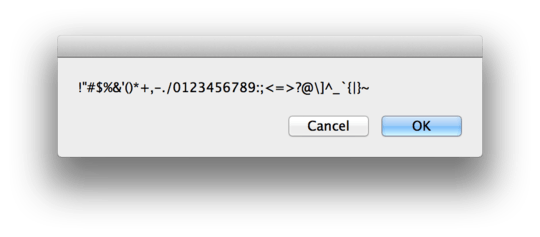17
6
The Symbols vs. The Letters
The ASCII characters have been divided once again! Your sets are The Letters and The Symbols.
The Letters
ABCDEFGHIJKLMNOPQRSTUVWXYZabcdefghijklmnopqrstuvwxyz
The Symbols
!"#$%&'()*+,-./0123456789:;<=>?@[\]^_`{|}~
The task is to write two programs:
Print each of The Letters exactly once without using any of them in your program.
Print each of The Symbols exactly once without using any of them in your program.
Rules
- Whitespace may appear in your program or the output.
- Non-ASCII characters are not allowed.
- Output goes to standard out or to a file as either the contents or name of the file.
- No input.
- Output must only contain ASCII characters from one set or the other.
- The programs can be written in different languages or the same language with one exception:
- The Whitespace language may only be used for one of the programs.
- Standard loopholes apply.
Scoring
# of characters in program 1 +# of characters in program 2 = Score
Lowest score wins!
Note:
To encourage more submissions, you may still post an answer with a solution for only one of the programs. You won't be able to win, but you would still be able to show off something cool.
Thanks to Calvin's Hobbies for inspiring the idea with his previous question.

4This isn't possible in most languages... For example in Haskell = is inescapable – proud haskeller – 2014-08-22T16:10:51.320
1@proudhaskeller part of the challenge is picking a language where it is possible. – hmatt1 – 2014-08-22T16:54:58.417
(I realise I should've thought of this while the question was in the sandbox, but) given the "whitespace may appear in the output" rule, does this mean the order of the (letters|symbols) doesn't matter? – FireFly – 2014-08-22T17:04:05.950
@FireFly any order is fine. – hmatt1 – 2014-08-22T17:08:01.833
Is it allowed to have control characters (codepoints 0 to 31 and 127) in your program? – FUZxxl – 2014-08-22T20:13:38.247
I'm waiting for the Whitespace answer. – Ray – 2014-08-22T20:14:03.333
@FUZxxl yeah, you can use ASCII characters 0-31 and 127 in either program. – hmatt1 – 2014-08-22T20:19:39.653